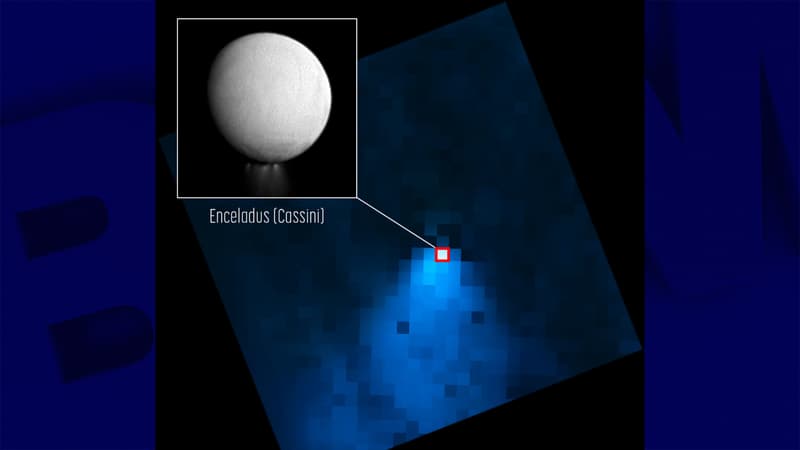A huge column of water vapor in the middle of the solar system. The size of the mass of water ejected by Enceladus, one of Saturn’s moons, has been reassessed thanks to new images provided by the James Webb telescope. Scientists believe that this satellite is one of the best hopes for supporting life outside of Earth, in particular thanks to the significant presence of water and complex organic compounds in its soil.
Astrophysicists have known since 2005 that water emanates from Enceladus thanks to powerful geysers located at its South Pole, but the size of this cloud of water was probably underestimated until recently provided new images.
“When I looked at the data, at first I thought I must be wrong. It was so shocking to detect a water column more than 20 times the size of this moon,” says NASA study lead author Gerónimo Villanueva. , in a press release.
300 liters of water ejected per second
Geysers also expel water very quickly. In one of them, the scientific team working on the project estimates that the water was coming out at almost 300 liters per second, enough to “fill an Olympic-sized swimming pool in just over two hours,” says NASA.
Scientists already have a fairly extensive understanding of Enceladus, whose geysers were flown by the Cassini-Huygens probe, which explored Saturn and its surroundings between 1997 and 2017.
The James Webb telescope, launched in 2021, however, makes it possible to clarify, thanks to its unprecedented power, certain observations within the solar system.
Source: BFM TV


